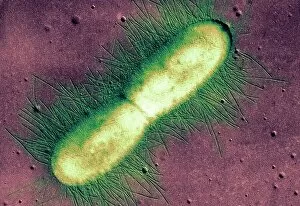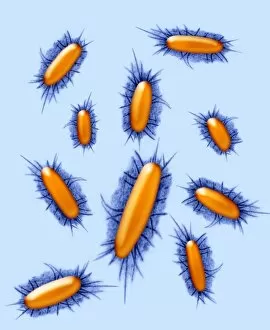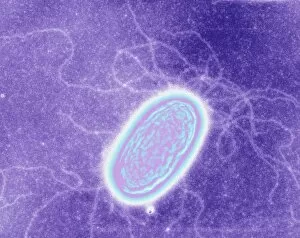Pili Collection
"Pili: Unveiling the Intricate World of Bacterial Computing and Art" Delving into the microscopic realm, pili, also known as bacterial appendages
For sale as Licensed Images
Choose your image, Select your licence and Download the media
"Pili: Unveiling the Intricate World of Bacterial Computing and Art" Delving into the microscopic realm, pili, also known as bacterial appendages, offer a fascinating glimpse into the intricate world of E. Coli bacterium and its potential in bacterial computing. Through Transmission Electron Microscopy (TEM), scientists have captured mesmerizing images that showcase these tiny structures with awe-inspiring detail. In a groundbreaking fusion of science and art, conceptual artworks emerge to depict the wonders of bacterial computing. These captivating visuals serve as a testament to human creativity while exploring the untapped potential residing within these Gram-negative bacteria. The marriage between technology and biology takes center stage as innovative minds envision how bacteria could be harnessed for computational purposes. Conceptual artwork showcases this visionary approach by intertwining scientific concepts with artistic expression, resulting in thought-provoking pieces that challenge our perception of what is possible. Elevating E. Coli bacterium from mere microorganisms to subjects of artistic interpretation reveals their hidden beauty. Artists skillfully capture their essence through various mediums such as paintings or sculptures, allowing us to appreciate their unique forms on a whole new level. Amidst this exploration lies another intriguing aspect – bacterial conjugation. This natural process where genetic material is transferred between cells becomes an inspiration for yet another stunning piece of artwork. The intricacies involved in this phenomenon are brought to life through creative representation, inviting viewers into a world where science meets imagination. Pili serves not only as bridges connecting bacteria but also bridges connecting different disciplines - merging biology with artistry and computation with nature's design principles. As we unravel more about these remarkable organisms' capabilities through research and innovation, it becomes increasingly evident that there is much more than meets the eye when it comes to pili - opening up endless possibilities for future discoveries at both scientific and aesthetic frontiers.










